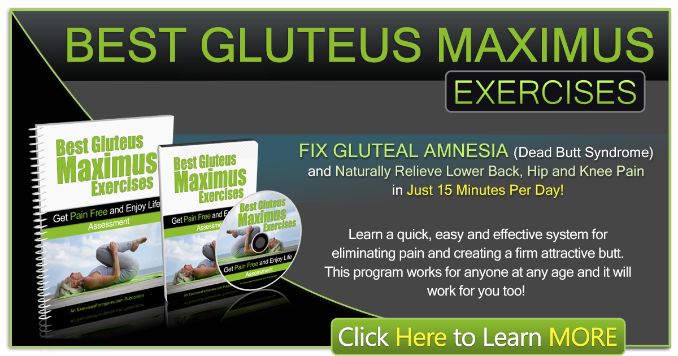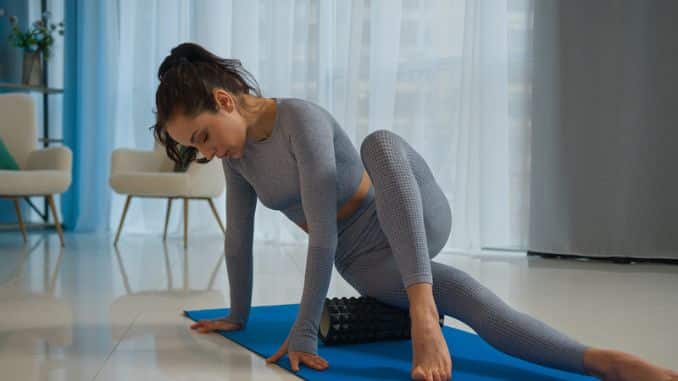
How to foam roll out the gluteus medius muscle: Foam rolling the gluteus medius with a foam roller is a popular self-myofascial release technique that helps reduce muscle tightness and then improve flexibility.
The gluteus medius is one of the key muscles in your hips, responsible for stabilizing your pelvis and supporting movement during everyday activities like walking, running, and standing.
When this muscle becomes tight or weak, it can lead to discomfort, pain, and even affect your posture.
It also helps decrease pain by targeting tight muscles, which can improve muscle function and reduce discomfort.
One of the most important areas to target is the gluteus medius, a muscle crucial for hip stability and overall lower body mobility.
Foam rolling is a simple yet effective way to release tension, improve flexibility, and boost mobility in the gluteus medius, helping to alleviate common issues like hip pain or discomfort.
In this post, we’ll dive into how foam rolling the gluteus medius can be a game-changer for your overall hip health and mobility.
However, this article will guide you through the technique of foam rolling the gluteus medius, provide helpful tips, and outline the numerous benefits of incorporating this practice into your fitness routine.
4 Ways to Foam Roll Away Back Pain
1. Foam Rolling Against the Wall
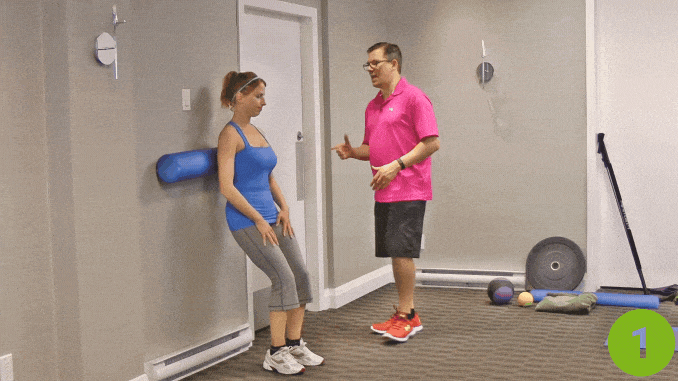
- Place the foam roller against the wall. Go down and up to about shoulder blade height.
- Perform one set of 5 reps in a smooth, controlled movement with an intensity of feeling like you are having a massage.
- Rolling up and down would be one repetition. Execute properly to roll away back pain effectively.
2. Rolling the Back With a Big Ball Against the Wall
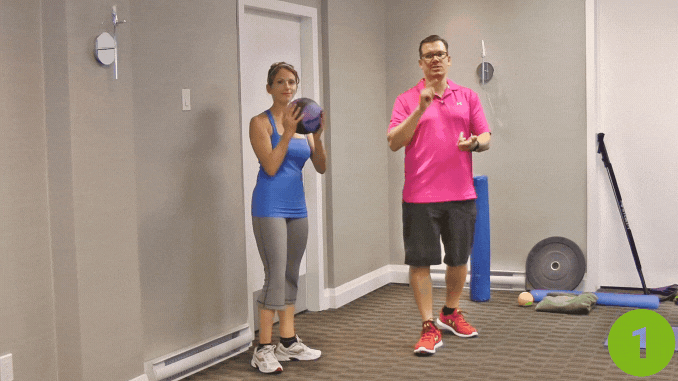
- Place a big ball like a soccer ball or basketball against the wall.
- Move the ball side-to-side, up and down, and in circles, looking for tight areas in the shoulder blades, midback area, and low-back area.
- Perform one set of 5 reps in a smooth, controlled movement with an intensity of feeling like you are having a massage.
- Rolling the ball up and down is one repetition, or in a big circle.
3. Rolling the Back With a Small Ball Against the Wall
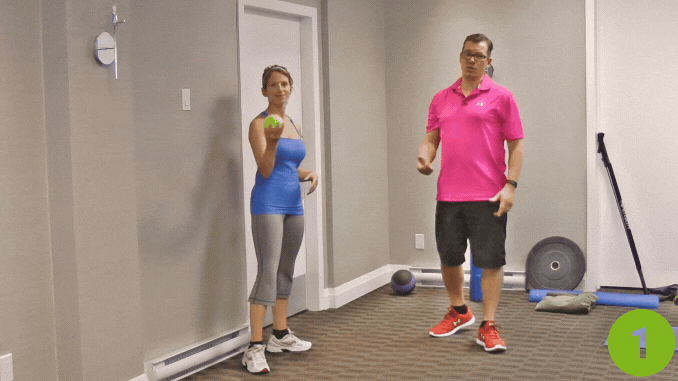
- Place the small ball, like a softball or baseball, against the wall.
- Move the ball side-to-side, up and down, and in circles, looking for tight areas in the shoulder blades, midback area, and low-back area.
- Perform one set of 5 reps in a smooth, controlled movement with an intensity of feeling like you’re having a massage and the muscles are loosened up. Do these movements to roll away back pain.
- One repetition would be rolling the ball up and down or in a big circle.
4. Rolling the Back With a Small Ball and Towel Against the Wall
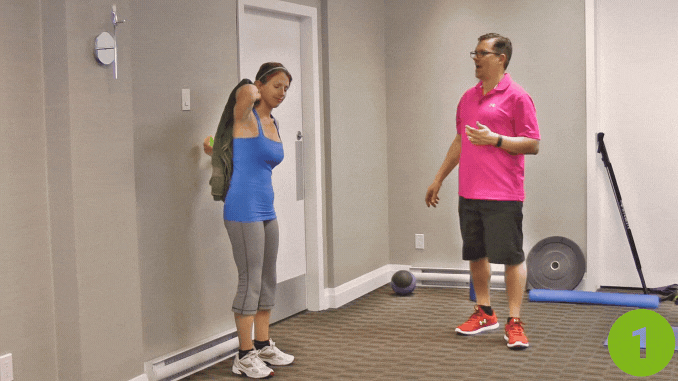
- You can utilize a towel on your back. Place the towel over your shoulder and then place the ball between the towel and your back.
- This will decrease the intensity and will spread the force around further.
- You can put something between your back and the ball if the ball is too much.
- Move the ball side-to-side, up and down, and in circles, looking for tight areas in the shoulder blades, midback area, and low-back area.
- Perform one set of 5 reps in a smooth, controlled movement with an intensity of feeling like you’re having a massage and the muscles are loosened up.
- Rolling the ball up and down or in a big circle is one repetition.
So, there you go, everyone else. These four options you have when it comes to foam rolling without putting too much pressure on your shoulders and chest. Do the steps to roll away back pain.
Foam Roller Exercises for the Lower Body
The lower body is often subjected to intense physical activity, making it prone to muscle tension and tightness.
Foam roller exercises for the lower body can target specific muscle groups, release tension, and improve flexibility.
Let’s explore some foam roller exercises specifically targeting muscle tissue in the lower body.
1. Calf Roll
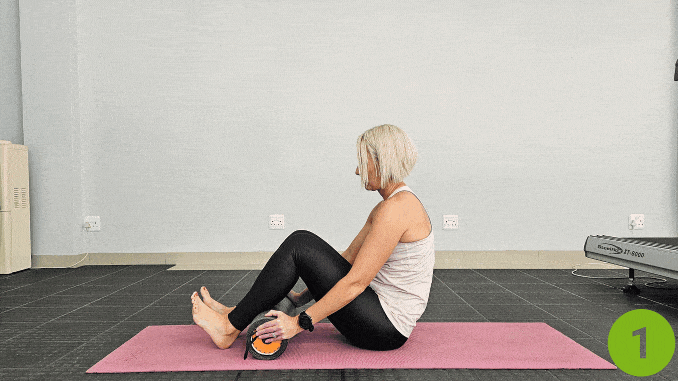
For this exercise, utilize the foam roller or an exercise ball.
- Begin in an upright sitting position on the floor with your knees bent and your feet flat on the floor, maintaining good alignment in your upper body.
- Place the foam roller under your calf area.
- Extend both legs out in front and place both hands behind you for support.
- Engage your core and use a gluteus medius foam roller.
- Push from your hands to slightly lift your seat from the ground.
Note: To intensify the movement, slightly lean your body forward or slowly roll your calves from side to side.
2. Hamstring Roll
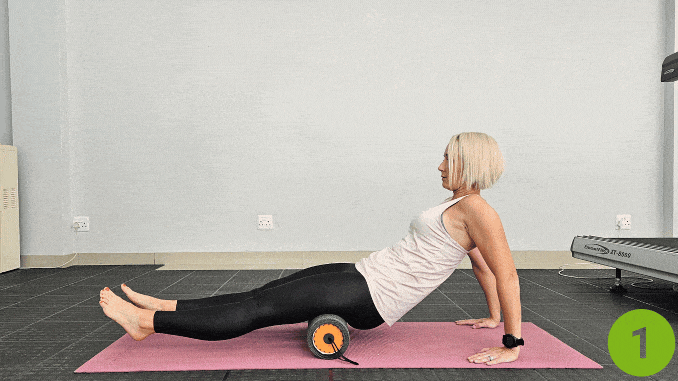
- Begin in an upright sitting position on the floor with your legs bent and your feet flat on the floor, maintaining good alignment in your upper body.
- Place both hands behind you for support while using the gluteus medius foam roller.
- Extend both legs out front and place the foam roller under your hamstrings.
- Straighten both arms to lift your seat off the floor, then roll the foam roller from just above your knees to the bottom of your seat and body and back. Repeat the movement.
Note: Target the outer lateral hamstring by rolling with one leg and turning the foot outward. To focus on the outer thigh, pivot the foot inward while rolling with a foam roller, tennis ball, or flex bar to apply pressure to the inner hamstring. Repeat on the other leg.
3. Hamstring Stretch
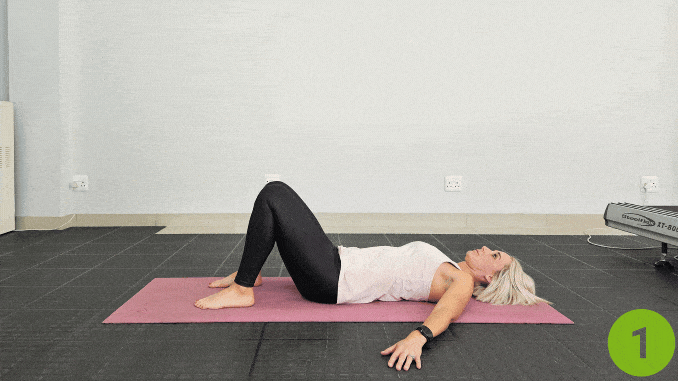
For this foam rolling exercises, use a strap, resistance band, towel, or anything that is long enough to wrap under your foot.
- Lie on your back on the floor with your knees bent and feet flat on the floor, relaxing your upper body.
- Engage your core.
- Lift your left leg and then use your hands to grab the back of your hamstring, pulling your left knee closer with your toes pointing toward you.
- Hold this position for a couple of seconds while you foam roll out the gluteus medius muscle.
- Relax and return to the starting position. Repeat the movement on your right leg.
4. Chest Opener
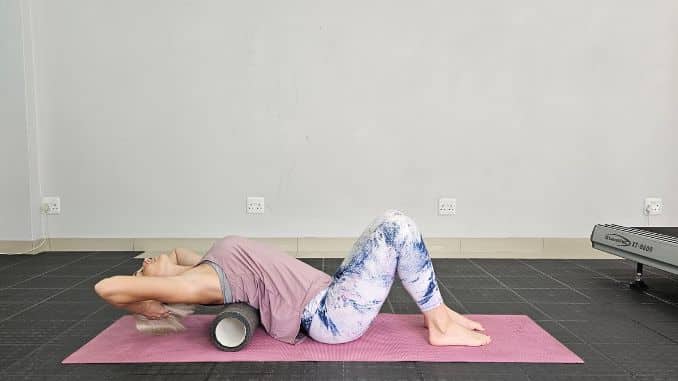
- Lie on your back on the floor with your knees bent and then your feet flat on the floor.
- Place the foam roller horizontally under your mid back.
- Position your hands by your ears or interlace your fingers behind your head for support while learning how to foam roll out the gluteus medius muscle.
- Engage your core, lower your head to the floor, and arch your spine over the foam roller, opening your chest up.
- Hold this position for a few seconds. Relax and then return to the starting position.
- Repeat the movement as needed.
To make this foam rolling exercises easier, place a pillow or rolled blanket underneath to support your head.
Note: To intensify the movement, place the foam roller higher, lift your hips, and then roll back and forth or rotate from side to side.
What is Foam Rolling?
Foam rolling is a self-myofascial release technique that can enhance your warmup, cool down, or even before workouts.
It’s also an effective tool for those with chronic pain conditions such as arthritis and fibromyalgia who may benefit from the pressure on their tight muscles while foam rollers are rolling over them at home to eliminate tension buildup and may experience less discomfort during both exercises and daily life activities.
Foam rolling has been shown to reduce muscle soreness after exercise. Increase range of motion through stretching out stiff joints. Prevent injuries due to decreased risk of injury via improved joint mobility.
Some people believe it would help if one did not use too much force when doing self-myofascial relief (SMR) because it causes damage inside the tissue, which leads back to increased inflammation & more pain which results in bad habits toward future activity.

About the Middle Back (Thoracic Spine)
The middle of your back, or the thoracic spine, is the most extended region. That runs from the base of your neck down to your abdomen.
It consists of 12 vertebrae and is the only spine region attached to the rib cage, making it very complex.
The thoracic spine has the slightest range of motion but offers the most stability. This sturdy spine region helps support the neck and rib cage while protecting the spinal cord and vital organs.
The Causes of Middle Back Pain
Middle back pain is located in the thoracic spine, which consists of 12 vertebrae that are located above the bottom rib cage.
The spinal cord is a long bundle of nerves. The disk spine protects the spinal cord.
And allows the brain to communicate with body parts, like arms and legs, directly or indirectly through nerve signals received by sensory organs such as eyes, ears, etc.
They are working out when you’re older than 18 risks breaking your lower lumbar discs—and doing repetitive movements without breaks crossing legs at work ledges on stairways.
Symptoms:
- Muscle aches
- Dull pain
- A burning sensation
- Sharp pain
- Muscle tightness or stiffness
Causes of Middle Back Pain
There are many causes of back pain, ranging from injuries to poor posture, and then using a gluteus medius foam roller can help relieve tension.
These possible causes include:
- Poor Posture. Repeated pressure on the spine can lead to pain in the middle back, which is often caused by poor posture. When muscles and ligaments are overworked from excess slouching, aches and chronic low back discomfort may be experienced.
- Herniated disk. These symptoms may occur when a herniated disk pushes against a nerve. This pressure on the nerve can result in pain, tingling, or numbness in areas where the affected nerve travels. The term herniated disk is commonly used to describe this condition. And has two main types: slipped discs and then ruptured discs.
- Aging. The American Association of Retired Persons (AARP) found that back pain is most likely in those aged 30-50. This happens due to the natural aging process and all its adverse effects, such as thinning bones, reduction in muscle mass, and fluid between joints in the spine.
- Fractures. Fractures are severe injuries that often require immediate treatment. People can experience severe pain, urinary incontinence, and tingling or numbness in the affected area if they have had one. Treatment options may include wearing a brace. Going to physical therapy and possibly surgery depends on your fracture/injury severity.
Four-point Position
- Take a foam roller and get into a four-point position, with your knees under the hips and pushing the hips back a little bit.
- Place one hand on the foam roller and roll it away from your body. Bring your hand and shoulder as far as you can. Then, switch to the other side.
- Try to bring the hand and shoulder as far as you can to get an excellent stretch in the mid-back and work on the mobility of the midback.
- This is an excellent exercise if you have midback tightness. You can go through this exercise quickly at home or the end of your workout.
We need to know the causes of our back pain. Simple changes will not harm our body but help us feel better and avoid medications like this easy foam roller exercise!
Technique For Self Myofascial Release Of The Gluteus Medius
Foam rolling the gluteal muscles, including the gluteus maximus, gluteus medius, and gluteus minimus, is an effective way to release tension and enhance blood flow, promoting recovery after long periods of sitting or intense exercise.
Follow these steps to ensure you engage the right muscles:

- Begin by sitting on the foam roller with your legs extended in front of you.
- Straighten one leg and slightly shift your weight to one side, focusing on the gluteus medius of that hip.
- Lean back while sitting on the foam roller to effectively target the glutes.
- After that, place one hand at the back for support while keeping one foot on the ground for balance.
- Roll slowly and steadily, covering the entire area from your lower back to the top of your thigh. Aim for 5 to 10 repetitions, adjusting pressure as needed to target any tender spots.
As you foam roll, engage both the gluteus maximus and gluteus medius muscles for a comprehensive approach.
Foam rolling can help you identify hidden muscle tension, especially in the gluteus medius, which can be difficult to stretch and release through traditional methods.
You are going through 5 repetitions up to 10 repetitions. You are going at a nice controlled speed to get the most out of the exercise.
Understanding the Gluteus Medius
A key muscle in the hip abductor group, the gluteus medius is responsible for leg abduction and then maintaining hip joint stability.
The gluteus medius (GMed) [3] is a key muscle in the hip abductor group. The gluteus medius is a muscle responsible for leg abduction and hip joint stability.
Gluteus medius weakness [4] is common in people with chronic low back pain (LBP).
Tight glutes can lead to pain and discomfort in the lower back, knees, and hips. Learn how to foam roll out the gluteus medius muscle to relieve tension, improve mobility, and enhance flexibility.
Follow these simple techniques for effective self-massage and better movement.
The gluteus medius is often overlooked in exercise programs, but foam rolling can help target this muscle.
Location:
It’s on the outer side of the hip, between the gluteus maximus and then gluteus minimus.
It starts from the outer part of the hip bone and connects to the top of the thigh bone. Learn how to foam roll out the gluteus medius muscle to release tension, improve mobility, and reduce pain effectively.
The gluteus medius has three parts:
- Front (Anterior) Fibers – Help turn the leg inward and lift it forward.
- Middle Fibers – Mainly lift the leg to the side and keep the hips stable.
- Back (Posterior) Fibers – Help turn the leg outward and then move it backward.
Causes of Tight Gluteus Medius
The tight gluteus medius can happen for several reasons, including:
1. Sitting too much – Reduces blood flow and shortens the muscle.
According to an article reviewed by Dr. Howard LeWine, a medical doctor at Harvard Medical School, one common cause of tight glutes is sitting for long periods.
2. Overuse or heavy exercise – Activities like running, cycling, or squats can strain the muscles.
3. Poor posture – Standing or walking with uneven weight distribution can be relieved by using a gluteus medius foam roller.
4. Weak surrounding muscles – may cause the gluteus medius to overcompensate, potentially leading to tightness.
5. Injury or compensation – Your body may tighten the muscle to protect an injured area. Learn how to foam roll out the gluteus medius muscle to release tension, improve mobility, and reduce pain effectively.
Benefits of Foam Rolling the Gluteus Medius
- Strengthening the gluteus medius [5] is important for avoiding hip issues, improving your posture, and keeping your pelvis aligned properly.
- Relieves tightness in the hips, easing discomfort in the lower back and legs.
- Improves blood flow, helping muscles recover faster and feel better.
- Increases flexibility, making it easier for your hips to move.
- Boosts balance and posture, improving your overall movement.
- Helps prevent pain and injury by keeping muscles loose and flexible. Learn how to foam roll out the gluteus medius muscle to relieve tightness, improve mobility, and enhance recovery.
When to Foam Roll the Gluteus Medius:
- Before a workout, use a gluteus medius foam roller to loosen up muscles and prepare your body for movement.
- After a workout, help muscles relax and then recover.
- On rest days or daily, keep your hips and then legs feeling good.
Additional Tips For Foam Rolling the Gluteus Medius
To get the most out of your foam rolling practice, consider these additional tips:
1. Incorporate A Warm-Up
For best results, foam roll the gluteus medius after a short warm-up. Light cardio or dynamic stretching can help increase blood flow to the muscles, making foam rolling more effective.
2. Stay Consistent
Foam rolling should be a regular part of your fitness routine. Aim to foam roll your glutes at least two to three times weekly or more frequently if you experience tightness or discomfort.
Foam rolling [1] the glute muscles can significantly aid in recovery and alleviate tightness or soreness, enhancing flexibility and overall physical performance.
3. Combine With Strengthening Exercises
Foam rolling is excellent for releasing tension, but strengthening the gluteus medius is equally important to prevent future issues.
Exercises like clamshells, side-lying leg raises, and single-leg bridges will help maintain strength and functionality in this muscle.
The Benefits Of Regularly Foam Rolling The Gluteus Medius
Incorporating foam rolling of the gluteus medius into your fitness routine provides numerous benefits, including:
- Reduced Muscle Soreness: Foam rolling helps to alleviate delayed onset muscle soreness (DOMS), particularly after intense lower-body workouts.
- Better Posture: Tightness in the gluteus medius can lead to poor posture, especially during activities like running or walking. Regular foam rolling can lengthen the muscle and improve posture and then alignment.
- Enhanced Recovery: By increasing blood flow and circulation to the muscle, foam rolling aids in the recovery process, allowing your muscles to repair more quickly after exercise. It also benefits the gluteus minimus, enhancing muscle recovery and then flexibility.
- Increased Neurological Awareness: Foam rolling can increase neurological awareness, particularly around the hip area. This heightened awareness can enhance active range of motion (AROM) and improve athletic performance by optimizing muscle mechanics and then alleviating pain.
Consistency is key to achieving these benefits. By foam rolling two to three times a week, you can significantly reduce muscle soreness and improve posture, which often suffers due to tightness in the gluteus medius [2].
Dr. Aaron Horschig, a well-known expert in physical therapy, emphasizes the importance of following foam rolling with activation exercises like clamshells or side-lying leg raises to keep the gluteus medius strong and then functional.
Conclusion and Next Steps
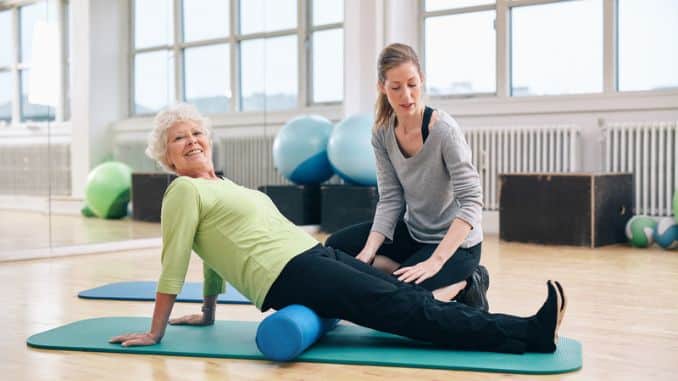
Foam rolling is a simple and effective way to relieve soreness and then improve muscle function in the gluteus medius.
Regular foam rolling, especially targeting the gluteus medius with a foam roller, can improve range of motion, reduce muscle soreness, and enhance athletic performance.
Incorporate foam rolling into your exercise program to target the gluteus medius and surrounding muscles.
Remember to start with gentle pressure and gradually increase as needed, and then avoid common mistakes to get the most out of foam rolling.
Foam rolling the gluteus medius is an essential practice for anyone experiencing hip, back, or knee discomfort, as well as athletes looking to enhance performance.
The glute medius plays a crucial role in pain management and performance enhancement by stabilizing the pelvis and improving the range of motion.
Regularly releasing tension in this critical muscle can improve mobility, reduce pain, and prevent injuries.
Whether you’re a seasoned athlete or someone who spends long hours standing or sitting, foam rolling the gluteus medius can significantly benefit your overall physical health.
Foam rolling can also alleviate tight glutes, which is especially beneficial for individuals who sit for long periods, helping to reduce discomfort in the lower back and then legs.
Incorporate foam rolling into your fitness routine today to experience the numerous benefits firsthand.
Ready to strengthen and tone your glutes? Discover the Best Gluteus Maximus Exercises that will help you build muscle, improve posture, and boost your overall fitness. These easy-to-follow movements are perfect for any fitness level!
FAQs
Is a foam roller good for your glutes?
Yes, foam rolling the gluteus medius can help release tightness and improve flexibility. It’s a good way to reduce discomfort and improve hip mobility, but it’s important to use the right pressure and technique.
How do I release my gluteus medius?
To release the gluteus medius, you can use a foam roller by sitting on the floor and placing the roller under your glutes. Slowly roll back and forth, focusing on the outer hip area. You can also hold on tight spots for a few seconds to help release the tension.
What muscles should you not foam roll?
Avoid foam rolling directly on joints (like the knees or elbows) or over bones. You should also be careful with rolling over the lower back, as it can be too intense for that area. Avoid foam rolling inflamed or injured areas or pain, seek professional guidance if unsure about safe application.
How to fix weak gluteus medius?
To fix weak gluteus medius muscles, exercises like side leg raises, clamshells, and hip abductions can help strengthen them. You can also combine these exercises with foam rolling to improve mobility and flexibility.
Is it bad if foam rolling hurts?
Some discomfort can happen during foam rolling, especially when working on tight spots, but it shouldn’t be extremely painful. If foam rolling hurts too much or feels sharp, stop and try a gentler approach or seek advice from a healthcare provider.

